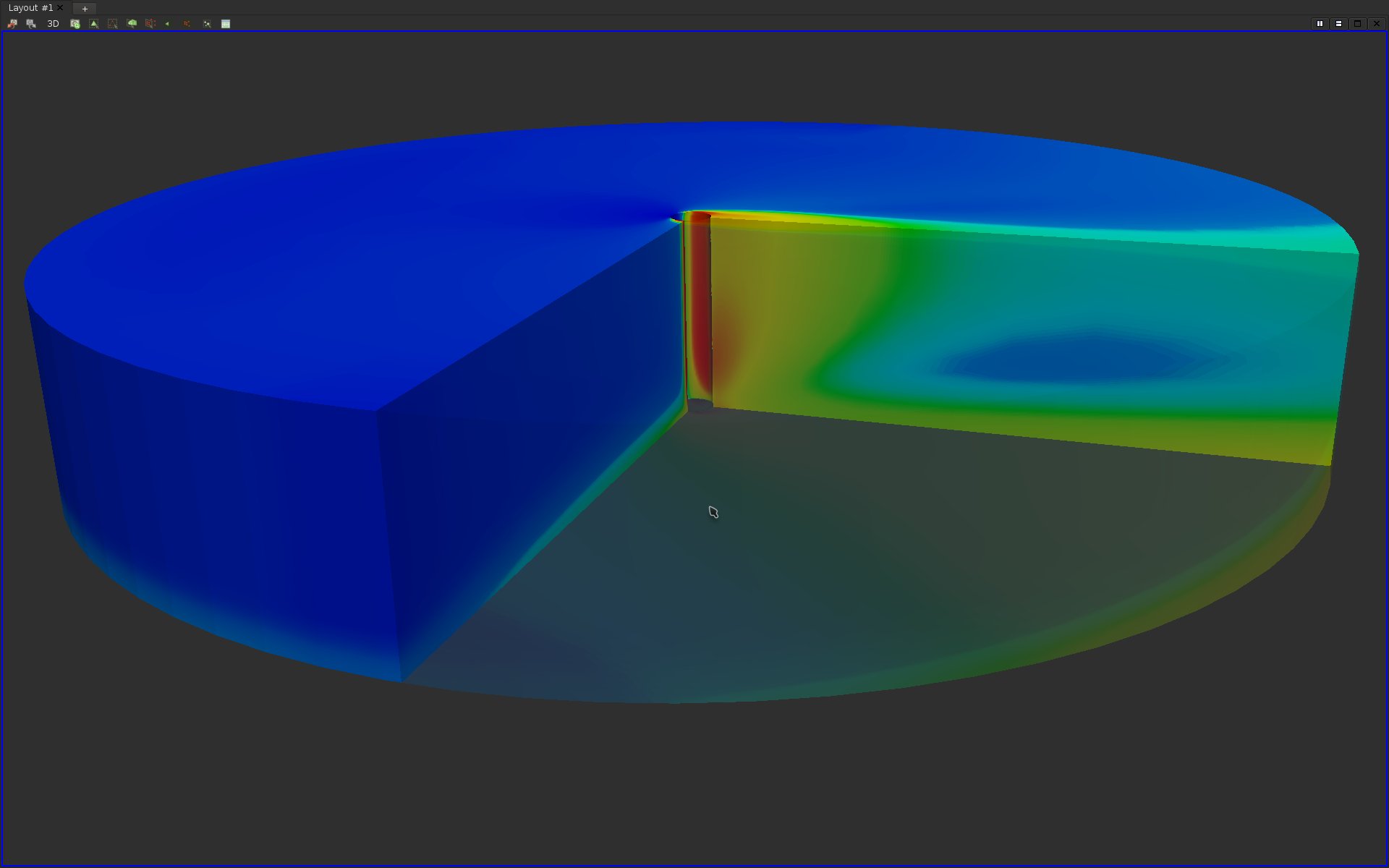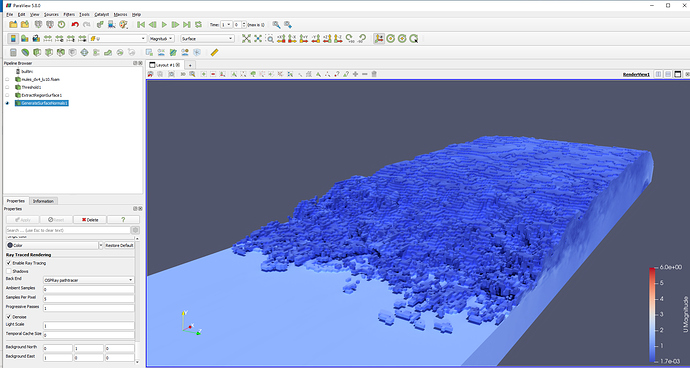

And PV seems to be unable to understand that. 1 Answer Sorted by: 2 If youre only interested in a part of the slice, you can use the Clip filter on the volume to extract the region of interest and then slice this region. However, the problem I am facing is that the topology of my z coordinates changes over time. To use ParaView effectively, you need to understand the ParaView data model. I am trying to achieve exactly that in Python now. to the second row, you assign z coordinates of your bathymetry.
#Paraview 3d visualization free
to the first row, you assign z coordinates of the free surface.The content of these liens is the value of, for instance, flow velocity (or pressure, or momentum, or whatever) and: The result is converted to a netcdf files (Python, xarray), saved on disk, and ingested in PV.įor depth-averaged flows, if you want to (fictitiously) recreate a filled contour effect, you need to create a matrix like the one I have described above, with only two lines. I repeat that, recursively, for all timesteps. In my simple1D case, I merge all layers into one matrix having Nr_of_Layers rows and Nr_of_x_gridpts columns. K15: layer number 15 (with k in range k=0 is the actual free surface)Ġ00001_200: time here equals 1.2 seconds (format is HHMMss_mms) It integrates with your existing tools and workflows, allowing you to build visualizations to analyze data quickly. Reach out for help selecting the best support option for you. Kitware offers flexible options, from pre-paid support to fully customizable support contracts. In this example, it includes flow velocity varying over time and space: ParaView is the world’s leading open source post-processing visualization engine. You can maximize ParaView’s capabilities by leveraging Kitware’s R&D visualization team and custom support services. ParaView can be a bit overwhelming at first, but. Start ParaView and open your two new VTK files within the same scene. Designed for anatomical tracing, ITK-SNAP includes this functionality. The wave model I am working with, spits out one single matlab binary file that contains all variables for all timesteps. To visualize the NIfTI volumes in 3D, we need to convert the voxel data into a 3D surface mesh in the VTK (Visualization ToolKit) format. I would go for netCDF format which is cross-platform, and contains all the metadata you might need, for possible future inspections. I know that there is the streamtracer filter which allow us to visualize the streamlines of the velocity field.

hello everyone, I would ask some help in order to better understand my simulation results, the following images represent the pressure and the velocity field on a 3D domain. So, in Python, I would manipulate my dataset so to “bake” it in a way and shape that PV likes it. Visualization of 3D flow from python simulation.
#Paraview 3d visualization code
I am completely lost when it comes to code inside the PV env., and I cannot help you with that. The pre-processing I had in mind, and I was mentioning in my previous post, would happen outside PV, namely in Python. Python package of VTK-based algorithms to analyze geoscientific data and models.


 0 kommentar(er)
0 kommentar(er)
